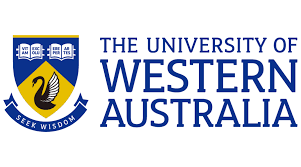University of Western Australia: Largest number of gravitational waves to date
An international team of scientists, including Australian researchers from the ARC Centre of Excellence for Gravitational Wave Discovery (OzGrav) at The University of Western Australia, have collaborated on a study revealing the largest number of gravitational wave detections to date – 90.
Gravitational waves are cosmic ripples in space and time that are caused by some of the most violent and energetic processes in the universe, like supernovas, merging black holes and colliding neutron stars – city-size stellar objects with masses about 1.4 times that of the Sun.
The newest gravitational wave detections come from the second part of the third observing run, called “O3b”, which lasted from November 2019 to March 2020. UWA Research Fellow at OzGrav Dr Carl Blair was working on one of the LIGO detectors during the observing period.
“It’s really exciting to see the improvements in detector sensitivity translate to so many new and exciting discoveries,” Dr Blair said.
There were 35 new gravitational wave detections during the period: 32 detections were from pairs of merging black holes and three were likely to have come from the collisions involving a neutron star, he said.
The mass of the lighter object in one of these events is a mystery, being heavier than a neutron star and lighter than a black hole is expected to be, according to Dr Aaron Jones, co-author and postdoctoral researcher at UWA.
“How does the universe create heavy neutron stars or light black holes? We need better gravitational wave detectors like NEMO in Australia to find out,” Dr Jones said.
Key roles played by UWA in the study included getting the gravitational wave detectors working at their current sensitivity, running the software pipelines that search for gravitational wave signals in the data and writing and reviewing the paper.
UWA’s OzGrav data analysis group, led by Professor Linqing Wen, runs one of the fastest software pipelines in the world called SPIIR, detecting 11 of the signals in O3b in just 10 seconds. This fast response allows telescopes to point at the events to look for the flashes of light indicating the nuclear synthesis of elements like gold and uranium.
UWA PhD student Manoj Kovalam said working as a developer for SPIIR throughout O3b had been a thrilling experience.
“Our software had been running continuously for almost half a year and made significant discoveries. Running in real-time, we’re among the first few people alerted when there’s a detection. It’s really cool to witness some of the interesting and rare gravitational wave events before the whole world is made aware,” Mr Kovalam said.
Dr Blair said the different properties of the detected black holes and neutron stars provided important clues as to how massive stars lived and then died in supernova explosions.
“The diverse mix of different signals being observed in GWTC-3 P2100239 indicates the world of black holes and neutron stars is complex,” he said.
“By studying these extreme object’s populations we are starting to see trends. These will tell us how the black holes and neutron stars came to collide and how the universe came to be the way it is.
“Not only can scientists look at individual properties of these binary pairs, they can also study these cosmic events as a large collection – or population.
“In this work, scientists analysed the distributions of mass and spin and looked for features which relate to how and where these extreme object pairs form. There are features we are seeing in these distributions which we cannot explain yet, opening up exciting research questions to be explored in the future.”

